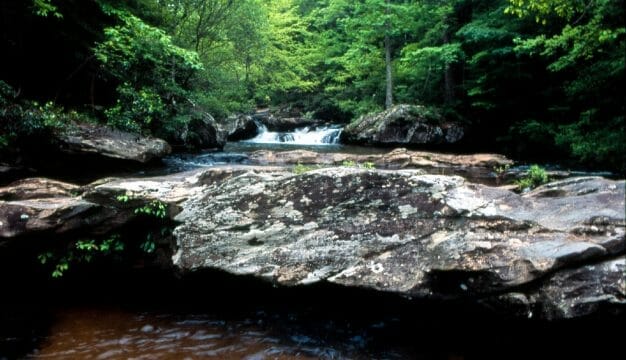Gadsden
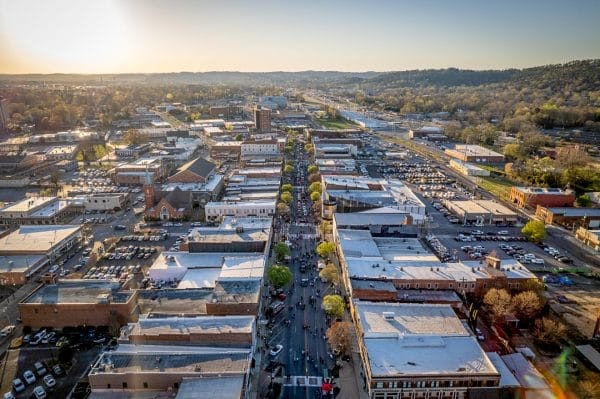 Gadsden
Gadsden, in the northeastern corner of Alabama, is the county seat of Etowah County. Gadsden is located in the mountainous Cumberland Plateau physiographic section, a dramatic geological setting that offers visitors such features as the 100-foot Noccalula Waterfall. The Coosa River runs through the center of the town. Gadsden played an important role in the Civil War and was an integral part of Alabama’s rise as a southern industrial power, being home to steel, textile, and other manufacturing facilities. Gadsden has a mayor-council form of government.
Gadsden
Gadsden, in the northeastern corner of Alabama, is the county seat of Etowah County. Gadsden is located in the mountainous Cumberland Plateau physiographic section, a dramatic geological setting that offers visitors such features as the 100-foot Noccalula Waterfall. The Coosa River runs through the center of the town. Gadsden played an important role in the Civil War and was an integral part of Alabama’s rise as a southern industrial power, being home to steel, textile, and other manufacturing facilities. Gadsden has a mayor-council form of government.
Notable Alabamians from Gadsden and its surroundings include Emma Sansom, who aided Confederate general Nathan Bedford Forrest in his capture of Union colonel and raider Abel Streight and his men during the Civil War; William Patrick Lay, founder of Alabama Power; and journalism pioneer Hazel Brannon Smith.
History
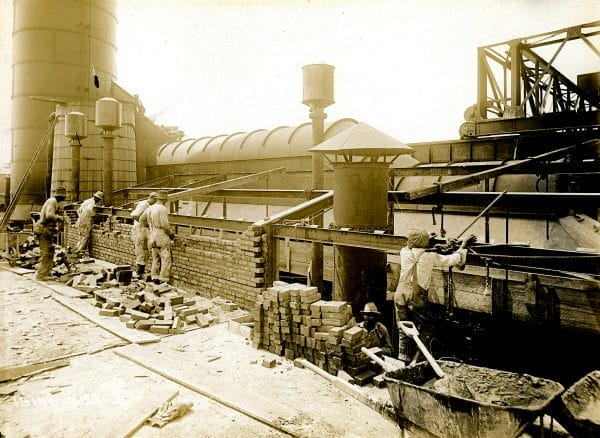 Gadsden Steam Plant, 1913
The region that includes Gadsden was part of the Cherokee Nation before non-Indian settlement. A few pioneers established homes in the area during the early nineteenth century, including John Riley, who built a home at the stagecoach stop that became known as Double Springs in 1825. The structure still stands today. After Cherokee Removal in the 1830s, the area opened up for homesteading and purchase. The settlement that would become Gadsden arose in the 1840s with the arrival of the first steamboat traffic. The town was renamed for Col. James Gadsden, who was behind the Gadsden Purchase, in which the United States acquired lands in the Southwest. When Gadsden was officially incorporated as a county seat in 1867, it lay within Baine County, which was carved out of DeKalb County. Baine County was dissolved in 1867, and Etowah County was established the following year, retaining Gadsden as its seat.
Gadsden Steam Plant, 1913
The region that includes Gadsden was part of the Cherokee Nation before non-Indian settlement. A few pioneers established homes in the area during the early nineteenth century, including John Riley, who built a home at the stagecoach stop that became known as Double Springs in 1825. The structure still stands today. After Cherokee Removal in the 1830s, the area opened up for homesteading and purchase. The settlement that would become Gadsden arose in the 1840s with the arrival of the first steamboat traffic. The town was renamed for Col. James Gadsden, who was behind the Gadsden Purchase, in which the United States acquired lands in the Southwest. When Gadsden was officially incorporated as a county seat in 1867, it lay within Baine County, which was carved out of DeKalb County. Baine County was dissolved in 1867, and Etowah County was established the following year, retaining Gadsden as its seat.
 Gadsden Mill Postcard, 1929
Gadsden’s economy centered around its importance as a port and warehouse city; from the late nineteenth century until the latter half of the twentieth century, Gadsden thrived as one of Alabama’s major industrial and shipping centers. Mills and factories, including Republic Steel, soon sprang up in the town. Industry further expanded with factories established by Gulf States Steel in 1903 and Goodyear Tire and Rubber in 1929. Gadsden native William Patrick Lay, born in the city in 1853, would build a hydroelectric dam on the nearby Big Wills Creek in 1903, which furnished the nearby town of Attalla with electricity. He would go on to found Alabama Power in 1906. Gadsden’s economy further expanded during the World War II era with the construction of the Gadsden Ordnance Plant, which produced shells for cannons. By the end of the war in 1945, the plant had produced more than 16 million shells. Manufacturing continued to be the driving force in the Gadsden economy up until very recently.
Gadsden Mill Postcard, 1929
Gadsden’s economy centered around its importance as a port and warehouse city; from the late nineteenth century until the latter half of the twentieth century, Gadsden thrived as one of Alabama’s major industrial and shipping centers. Mills and factories, including Republic Steel, soon sprang up in the town. Industry further expanded with factories established by Gulf States Steel in 1903 and Goodyear Tire and Rubber in 1929. Gadsden native William Patrick Lay, born in the city in 1853, would build a hydroelectric dam on the nearby Big Wills Creek in 1903, which furnished the nearby town of Attalla with electricity. He would go on to found Alabama Power in 1906. Gadsden’s economy further expanded during the World War II era with the construction of the Gadsden Ordnance Plant, which produced shells for cannons. By the end of the war in 1945, the plant had produced more than 16 million shells. Manufacturing continued to be the driving force in the Gadsden economy up until very recently.
Demographics
According to 2020 Census estimates, Gadsden recorded a population of 35,224. Of that number, 56.1 percent identified themselves as white, 37.4 percent as African American, 7.2 percent as Hispanic, 2.7 percent as two or more races, 1.0 as Asian, and 0.8 percent as American Indian. The city’s median household income was $34,062, and per capita income was $21,456.
Economy
According to 2020 Census estimates, the workforce in Gadsden was divided among the following industrial categories:
- Educational services, and health care and social assistance (23.4 percent)
- Manufacturing (20.1 percent)
- Arts, entertainment, recreation, and accommodation and food services (14.8 percent)
- Retail trade (12.1 percent)
- Professional, scientific, management, and administrative and waste management services (6.5 percent)
- Construction (5.6 percent)
- Transportation and warehousing and utilities (4.7 percent)
- Other services, except public administration (3.8 percent)
- Public administration (3.6 percent)
- Finance, insurance, and real estate, rental, and leasing (2.8 percent)
- Wholesale trade (1.7 percent)
- Information (0.8 percent)
- Agriculture, forestry, fishing and hunting, and extractive (0.2 percent)
Education
Gadsden City Schools includes eight elementary schools, three middle schools, and one high school. The University of Alabama maintains a campus at Gadsden Center that focuses on adult and continuing education. Gadsden State Community College, established in 2003, is a two-year institution of higher education with four campuses and two academic centers.
Transportation
Gadsden is located on the I-759 connector for Interstate 59, which runs northeast-southwest, and is also served by U.S. Highways 278, 411, and 431 and State Highway 759. Within the city, Gadsden Transit Services provides public transportation via buses and light rail. Air travel is served by Northeast Alabama Regional Airport.
Events and Places of Interest
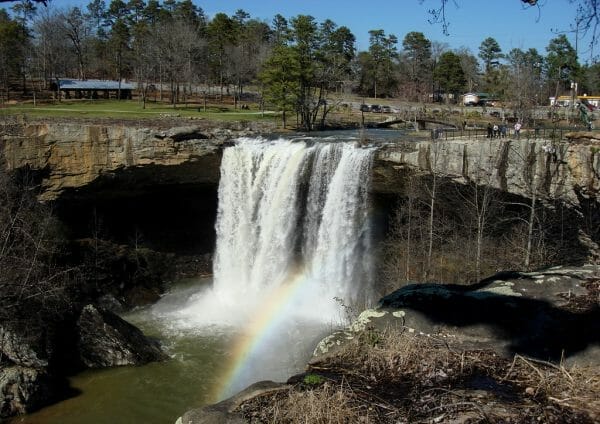 Noccalula Falls
Outdoors enthusiasts will find many activities on hand in and around Gadsden. One of the most striking destinations in Gadsden is Noccalula Falls Park, home to a dramatic 90-foot waterfall as well as camping, hiking, and other outdoor recreation activities. Paseur Park, located on a bluff above the city, offers viewers a spectacular view of Gadsden and its surroundings. And wildlife viewing, boating, and fishing are available at James D. Martin Wildlife Park & Walking Trail and Coosa River Board Walk-Moragne Park. Golfers may play at the Twin Bridges Golf Club and the Silver Lakes Golf Course, which is part of the Robert Trent Jones Golf Trail.
Noccalula Falls
Outdoors enthusiasts will find many activities on hand in and around Gadsden. One of the most striking destinations in Gadsden is Noccalula Falls Park, home to a dramatic 90-foot waterfall as well as camping, hiking, and other outdoor recreation activities. Paseur Park, located on a bluff above the city, offers viewers a spectacular view of Gadsden and its surroundings. And wildlife viewing, boating, and fishing are available at James D. Martin Wildlife Park & Walking Trail and Coosa River Board Walk-Moragne Park. Golfers may play at the Twin Bridges Golf Club and the Silver Lakes Golf Course, which is part of the Robert Trent Jones Golf Trail.
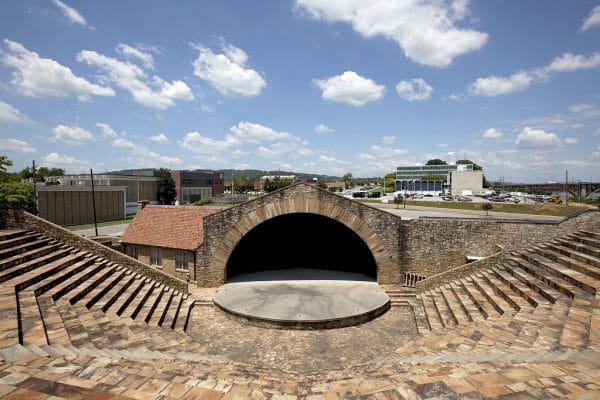 Mort Glosser Amphitheater
Gadsden also has numerous cultural activities. The Mary G. Hardin Center for the Cultural Arts offers visitors art exhibits, dance, musical, and theatrical performances, and a children’s museum. It is also home to the Gadsden Community School for the Arts and the Etowah Youth Orchestra. Visitor can hear live music at the Gadsden Riverfest, an annual event held in June that also features a Children’s Festival and arts and crafts, and enjoy live performances at the Gadsden Convention Hall and Historic Mort Glosser Amphitheater outdoor theater. Gadsden is the starting point of the annual World’s Longest Yard Sale, which runs along Lookout Mountain Parkway each August.
Mort Glosser Amphitheater
Gadsden also has numerous cultural activities. The Mary G. Hardin Center for the Cultural Arts offers visitors art exhibits, dance, musical, and theatrical performances, and a children’s museum. It is also home to the Gadsden Community School for the Arts and the Etowah Youth Orchestra. Visitor can hear live music at the Gadsden Riverfest, an annual event held in June that also features a Children’s Festival and arts and crafts, and enjoy live performances at the Gadsden Convention Hall and Historic Mort Glosser Amphitheater outdoor theater. Gadsden is the starting point of the annual World’s Longest Yard Sale, which runs along Lookout Mountain Parkway each August.
The Etowah Heritage Museum hosts exhibits relating to county history as well as a research library and a heritage tree park. Imagination Place Children’s Museum features interactive exhibits, including a miniature city, a desert-making machine, and a miniature tornado machine. The Gadsden Museum of Art is home to permanent collections of fine art and local historical artifacts. And the Etowah Memorial Bridge and Emma Sansom statue commemorate Gadsden’s role in American military history.
Further Reading
- Etowah County Centennial Commission. A History of Etowah County, Alabama. Birmingham: Roberts and Son, 1968.
- Heritage of Etowah County, Alabama. Clanton, Ala.: Heritage Publishing Consultants, Inc., 1999.
External Links
- City of Gadsden
- Etowah County
- Gadsden City Schools
- Gadsden Public Library
- Greater Gadsden Area Tourism
- Gadsden Times
- Gadsden Museum of Art
- Robert Trent Jones Golf Trail: Silver Lakes
- Mary G. Hardin Center for the Cultural Arts
- Univesity of Alabama Gadsden Center
- Gadsden State Community College
- Encycylopedia of Southern Jewish Communities
